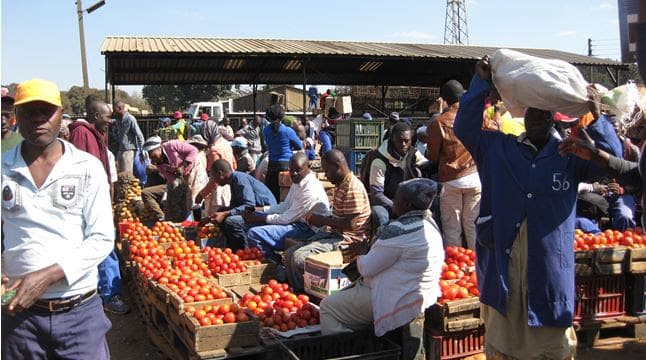By Charles Dhewa
Although many people associate commerce with modernisation, it is as old as the hills. To the extent, commerce refers to the exchange of goods and services, it has existed in many indigenous communities for generations.
Indigenous commerce is home-grown commerce tied to the origin of specific communities. While academics may want to limit the notion of commerce to business parameters, indigenous commerce embraces social, legal, economic and technological, among several elements influence a community’s survival.
At the core of indigenous commerce is knowledge sharing and building of Communities of Practice (CoPs) at the grassroots. Visible and noticeable expressions of indigenous commerce in many developing countries are Micro, Small and Medium enterprises (MSMEs). While some scholars and researchers insist on calling it the informal or invisible economy, indigenous commerce has several nuances that distinguish it from formal commerce with colonial roots.
Major characteristics of indigenous commerce
1. Indigenous commerce is driven by open source knowledge sharing – It has its own unique knowledge sharing pathways, different from formal commerce taught in schools and colleges. Within indigenous commerce, knowledge is shared through hands-on practice, experience, passion, trust, relationships and networks.
At no point will you hear actors in indigenous commerce saying, “I am looking for a commerce lecturer.” The entire indigenous commerce ecosystem is organised for social, political, economic and technological contribution to socio-economic progress.
Indigenous commerce has diverse actors such as youths (some conversant with technology), retrenches experienced in metal fabrication and other skills, women good at marketing and food preparation, transporters, loaders, advisors, governance committees and those good in conflict resolution. It is an institution whose practices cut across gender, age, skills base and home-origin.
2. Indigenous commerce entrepreneurs start and run their businesses sustainably due to passion. It is not about availability of free resources but passion and experience gained over years. Knowledge is passed-on as part of an in-built form of inheritance. Family units anchor indigenous commerce. The first priority in starting a business is creating employment for family members, who may not be initially paid a salary but provide labor so that the household is able to meet basic needs. Going to the father’s or mother’s market stall is like going to the field. The family members contribute individual skills like record keeping and bring their own networks.
3. Within CoPs or clusters, entrepreneurs do not work as competitors. Instead, peers try to complement each other in delivering products and services to customers. In order to reduce the cost of sourcing and using knowledge, enterprises are clustered in such a way that one business benefits from the other. Ultimately, the actors are able to build a positive reputation collectively such that their business cluster becomes known for consistent products and services.
4. Agility and flexibility in meeting market requirements. Production processes are not rigid like those of large formal companies. Indigenous commerce entrepreneurs quickly adjust to meet customer preferences, tastes and requirements. That is why they have all sorts of measurements. They do not measure all products in kilograms or monetary terms. They can use cups, baskets, crates, one by one counting, punnets, plastic bags and many others – all meant to respond to different customers. They have become awareness that without meeting the needs of customers there is no business. That is why they try to respond to different levels of buying power.
5. Indigenous commerce is based on fast and fluid decision-making. Entrepreneurs are not hamstrung by too much bureaucracy. Prices are adjusted quickly in response to market dynamics. Giving a discount or credit is a fast decision. The faster the decision making, the faster results are obtained. On the other hand, the formal economy takes long to make decisions and, sometimes by the time a decision is reached signals would have changed and opportunities would have evaporated while threats will have gone under in ways that render the business vulnerable to lurking shocks.
6. Fluid stocking – Most SMEs do not have warehouses. They know that putting commodities in rigid warehouses can tie down money and other resources in stocks. When resources are kept idle for some time, they attract serious opportunity costs. Based on fluid knowledge driven by solid networks, indigenous commerce entrepreneurs know what they want, when and in what quantities. Orders do not spend much time in the market because commodities flow as per demand requirements. They also know their stocking levels. If information asymmetry is minimized, this fluidity should influence production processes. Daily indicators from the market provide early warnings in terms of what needs to be produced, when and in what quantities, thus controlling gluts and shortages.
7. Patriotism – The majority of people who start MSMEs become so attached to their businesses to the point of not looking for jobs anywhere or crossing the border in search of employment. Most are owners attached to their own enterprises and fear of failure is very high, compared to if they were just employees. They understand the dynamics of the micro economy and want to see the business grow because it is a source of livelihood. Deep individual commitment to their business’ survival translates to at contributes to national economic stabilization.
8. Products and services do not require much foreign currency. This is an economy driven by local resources. Indigenous knowledge is full of improvisation as well as optimum use of available resources and knowledge. It is also characterised by flexible payment methods.
Whereas in formal commerce money is the only mode of payment, indigenous commerce uses several modes of payment. Commodities can be easily exchanged and one can pay labor services with commodities. The absence of money does not impede trading.
People continue to attach different versions of value to their commodities, for instance, maize could easily be exchanged with chicken. It does not just work in monetary terms. Indigenous commerce also emphasises an ecosystem of actors and commodities or services. On the other hand, formal commerce promotes linear movement of goods and services: Producer – manufacturer – wholesaler – retailer – consumer.
9. Meeting the needs of low income households – In terms of their target market, most MSMEs target the greater low to medium income population. What they are providing are necessities. For instance, more than 70% of the food commodities that pass through indigenous commerce are necessities, needed by the majority of the population.
These actors understand their markets and preferences. In order to meet the needs of different income levels, they tend to maintain their positions in the ecosystem. Traders are traders, farmers are farmers while transporters are transporters. This is how they are perfecting their roles in the ecosystem in ways that simplify resource mobilisation.
Such habits and practices are different from formal companies which try dominate the entire value chain by becoming producers, processors, wholesalers and retailers, leaving no room for other actors who can do some tasks better.
The importance of recognising indigenous commerce
Developing countries that have started recognising indigenous commerce are not only beginning to witness a broadening of their tax base, but started using indigenous commerce to grow their economies from the bottom.
However, what is now clear is that indigenous commerce requires different financial models based on authentic characteristics that are certainly different from the western-biased formal economy. For a long time, these indigenous commerce characteristics have been driving MSMEs entrepreneurship as collateral. Individual corporates cannot be more important than the solidarity of the entire indigenous commerce ecosystem.
To what extent can formal financial institutions use the existing indigenous commerce characteristics as collateral? Due to the fluidity of indigenous commerce, it is no longer sensible to use immovable property like buildings as collateral.
The fluid nature of indigenous commerce in response to various niche markets also means there is no longer need for mass production. Volumes are just produced as per market needs and commodities are sent where they are needed. These issues should be taken into account if modern financial institutions are to forge a new deal with society.






